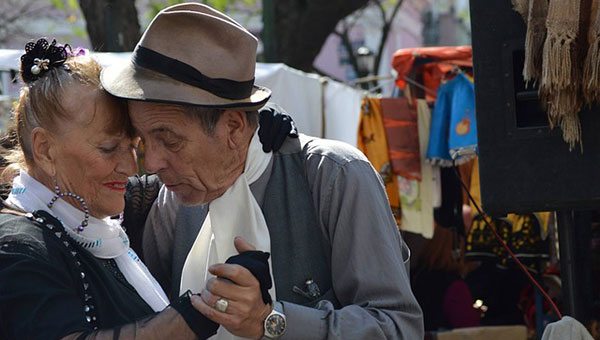 Strolling along the busy café-filled streets of Buenos Aires, it’s hard to image a more desirable place. Argentina has it all: a California-like climate, a multicultural population of well-educated people and almost limitless physical resources.
Strolling along the busy café-filled streets of Buenos Aires, it’s hard to image a more desirable place. Argentina has it all: a California-like climate, a multicultural population of well-educated people and almost limitless physical resources.
Stroll through the many exotic flower-filled parks in Buenos Aires and you’ll find young families enjoying picnics, lovers holding hands and open tango dancing cantinas filled with swirling couples.
Argentina is a proud nation and shares a particular kind of colonial bravado with Canada. Early in the last century, Canadian Prime Minister Wilfrid Laurier humbly (and wrongly) proclaimed the 20th to be “Canada’s century” – and so did Argentina.
With all due respect to Laurier, Argentina had the numbers. In the 1920s, this South American dynamo was poised on the brink of greatness. It was the most desirable New World destination for immigrants. It had a booming agricultural economy and its trade relationships were growing rapidly around the world. It looked like a winner.
Today, despite having all those advantages, Argentina has become something of an economic backwater, with gross domestic product per capita about a third of western developed nations. The country suffers from regular bouts of inflation, bitter political infighting and chronic corruption. For a Canadian, it’s shocking to discover that even normal middle-class Argentines live behind high walls and security cameras.
How did snowbound Canada manage to outperform a country that had all the advantages?
Argentina was handicapped at birth by the colonial-era importation of an aristocratic (hacienda) system of land ownership, whereas Canada (and North America in general) was built upon the more democratic homesteading tradition of small landholders.
These alternative systems established vastly different social and economic structures. Canada’s social DNA was deliberately designed to create a society of politically equal citizen-owners, whereas Argentina set its social structure around elitism and aristocratic privilege.
The hacienda system was a state-orchestrated, church-supported division of society into an elite land-holding class and the rest. Unlike Canadian homesteaders, a hacienda’s permanent and temporary employees were peasants or sharecroppers, working on land owned by the (often absentee) patrón.
These landless workers owned no property, enjoyed no political or economic rights and were subdued religiously by a land-owning church, which was very much a part of Argentina’s elite.
All was relatively quiet for many years – until Argentina encountered the massive democratizing forces of the 20th century. The last century drove an international social whirlwind with a massive expansion of the political enfranchisement to include vast populations of working people and other formally unrepresented groups.
Argentina was particularly unprepared for these democratizing forces and reacted badly when forced to bend.
Although both Canada and Argentina share a left-right political divide, the ideological distance between the parties is Grand Canyon-like in Argentina.
The first blow to Argentina’s 20th-century hopes was a reactionary military coup staged in 1930 by Gen. Jose Felix Uriburu. This regrettable event set a dangerous (and repeating) pattern in Argentina’s political life. It saw reformist parties banned and their political leaders imprisoned for what, in western terms, were relatively reasonable policies.
During the Second World War, another coup brought to power the reformist Juan Perón, who gradually instituted welfare measures and nationalized key industries. Although Perón was re-elected in 1951, he was unable to build a democratic social order upon Argentina’s aristocratic foundation and was eventually forced to flee the country.
Chaos followed as hard-right and radical-left political forces vied for power. At the end of this era, in the early 1970s, Perón’s widow, the irascible Isabel (Evita) Perón, came to power in yet another surge of reformist zeal. Under Evita’s rule, progressive reforms were instituted but massive inflation continued. After several years, the army predictably seized power once again.
This launched a violent civil war that saw thousands of (mostly young) Argentines imprisoned or ‘disappeared,’ while Argentinian society collapsed in viciousness.
As the 21st century unfolds and Canada’s citizen-owner dream is eroding, a new beginning seems possible in Argentina. Much work remains, including healing deep social wounds. But the southern sun shines brightly and the music plays.
Perhaps like the ever-present tango dancers, the social divisions of Argentina can be united and once again Argentina will glide seductively across the historical landscape.
Robert McGarvey is an economic historian and former managing director of Merlin Consulting, a London, U.K.-based consulting firm. Robert’s most recent book is Futuromics: A Guide to Thriving in Capitalism’s Third Wave.
Robert is a Troy Media Thought Leader. Why aren’t you?
For interview requests, click here. You must be a Troy Media Marketplace media subscriber to access our Sourcebook.
The views, opinions and positions expressed by columnists and contributors are the author’s alone. They do not inherently or expressly reflect the views, opinions and/or positions of our publication.

